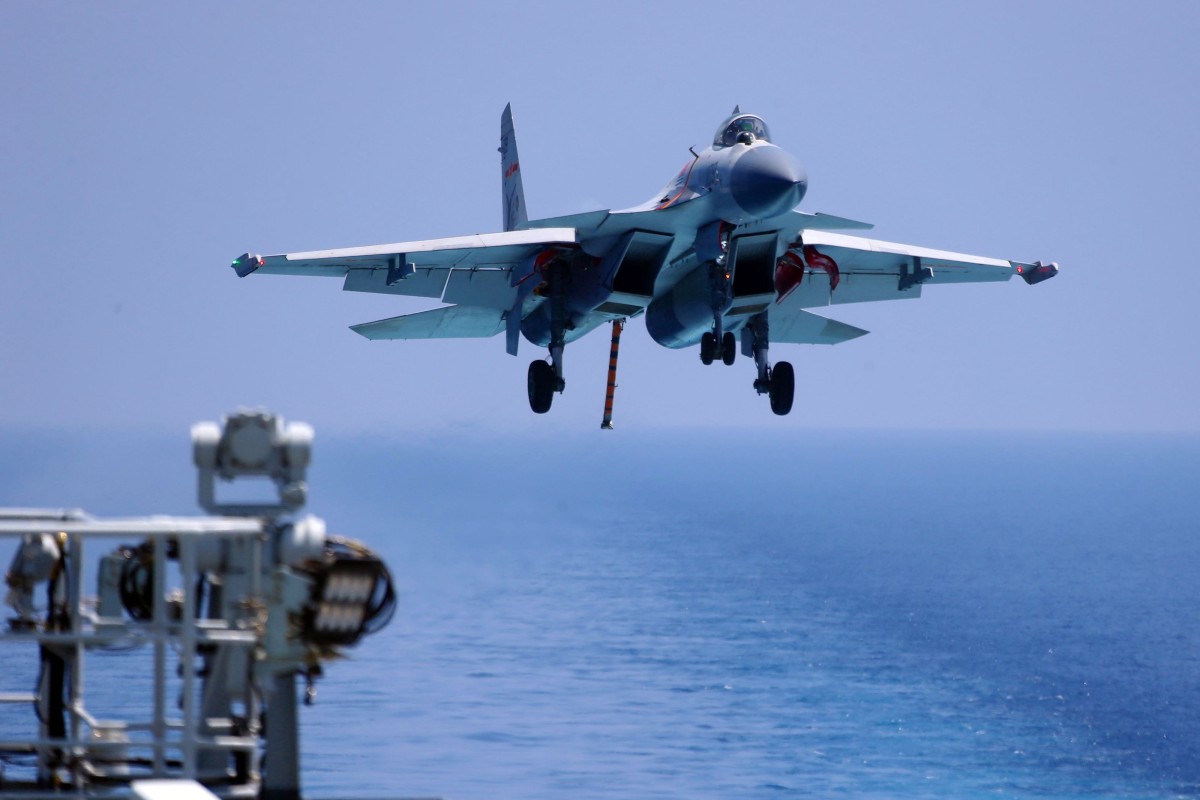SAC has new chairman a young buck by the name of Qian Xuesong 40 years old to shake things up a bit They also move into a new factory outside Shenyang. Well now that Hongdu and Shenyang move into new factory when will CAC and Guizhou move into new factory?
I know a lot of people are allergic to Minnie Chan but this is just straight news no opinion just disregard all those BS
Young gun takes on innovation mission in top Chinese fighter jet job
- Appointment of 40-year-old to head Shenyang Aircraft Corporation meant to inject new life into ageing manufacturer
Published: 1:00am, 27 Aug, 2019
The J-15 has been involved in a number of fatal accidents in recent years. Photo: AFP
China has named a young aircraft engineer to head Shenyang Aircraft Corporation (SAC) in a bid to rejuvenate one of its key makers of fighter jets.
Qian Xuesong, 40, was named chairman of SAC last week, succeeding Guo Dianman, the oldest member of the management team, which is dominated by engineers in their 50s.
A military insider, who declined to be named because of the sensitivity of the issue, said the central government hoped that a younger leadership would help the company innovate.
“President Xi Jinping has expressed dissatisfaction over SAC’s performance over the years. It developed the J-15 years ago,” the source said.
The fighter jet, the prototype of which made its maiden flight in 2009, has been involved in a number of fatal accidents in recent years. Last year, state broadcaster CCTV reported that the J-15’s unstable flight control system might have contributed to the accidents and that the navy had grounded all of the jets for three months during an investigation.
Qian Xuesong is the new chairman of Shenyang Aircraft Corporation.
Qian’s appointment came just weeks after SAC said it would move its headquarters from Shenyang’s downtown area to a new industrial park in the north of the city.
The relocation was revealed when the SAC signed an agreement with the Liaoning provincial government on July 10 to spend about 16 billion yuan (US$2.25 billion) on a huge complex, almost six times the size of its existing headquarters, according to the official Shenyang Daily.
The new headquarters will not only help SAC upgrade its facilities, but also give its affiliated Shenyang Aircraft Design Institute, or 601 Institute, more space to test new aircraft.
In April, the institute established an aircraft research centre in Yangzhou, Jiangsu province, in collaboration with the municipal government.
Military observers said that the leadership overhaul, the new headquarters, and the Yangzhou research centre were all steps taken to raise SAC’s competitiveness and technology.
“Yangzhou is near Shanghai and Jiangsu’s capital city Nanjing, where there are better aviation components supplies, better logistic support and a bigger talent pool,” Hong Kong-based military expert Song Zhongping said.
“As a city in the booming Yangtze River Delta, Yangzhou has better weather and a better living environment, as well as a geographic advantage to help the 601 Institute hire and keep younger aviation experts and technicians.”
In May, the Yangzhou research centre started recruiting flight control system designers, specialists in aerodynamics, flight vehicle system designers and other aircraft technicians and specialists from the Nanjing University of Aeronautics and Astronautics and other universities, according to recruitment news websites.
The institute has developed at least seven types of military aircraft including the early-generation J-5, J-6, and J-8, as well as the main fighters in China’s air force today, including the J-11, J-15 and J-16, modelled on the Soviet-built MiG and Russian Sukhoi series aircraft.



